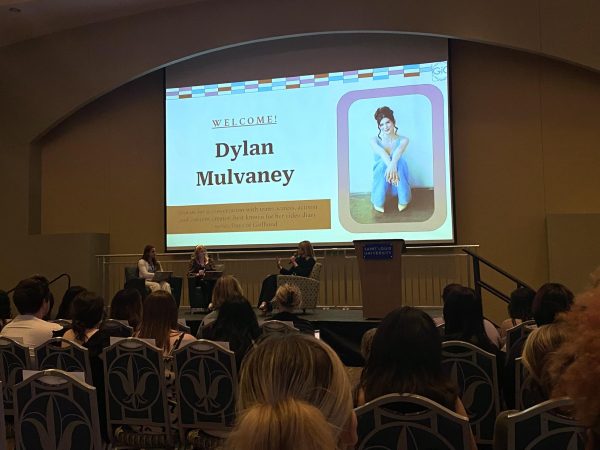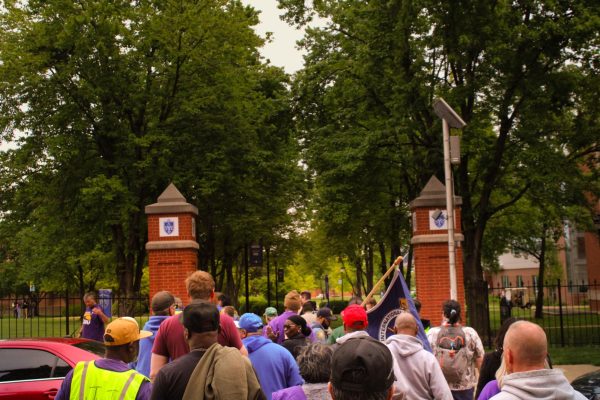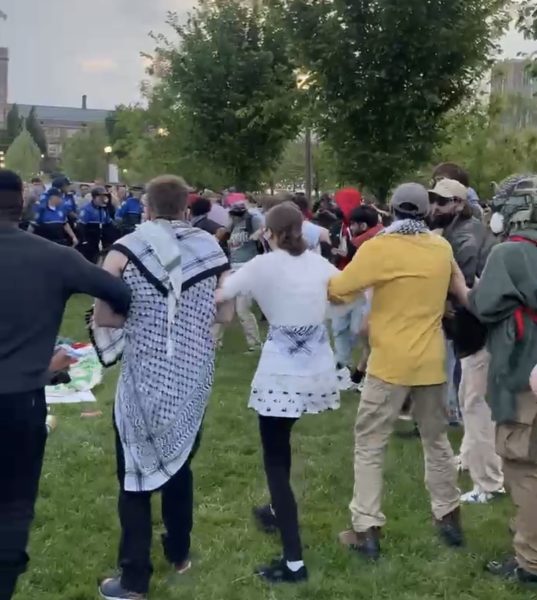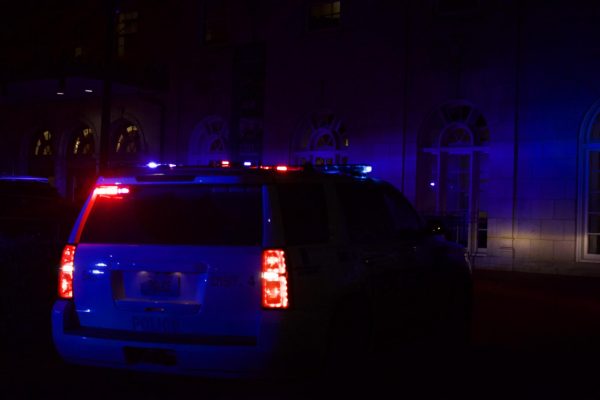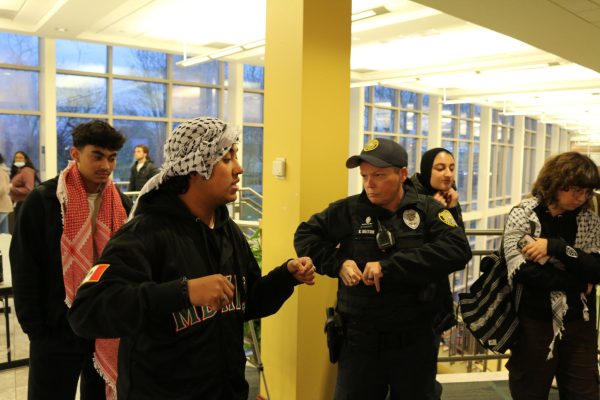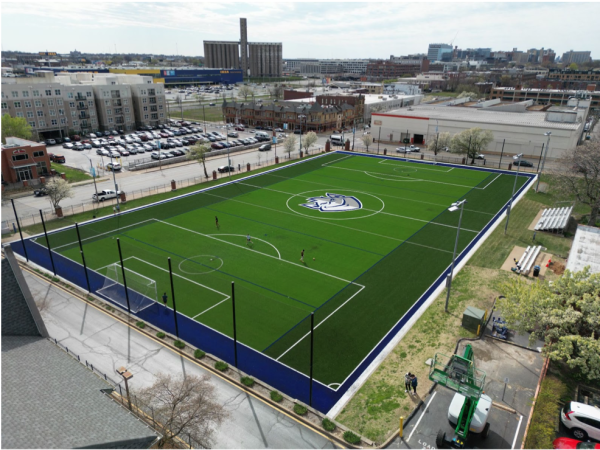SLU’s sustainability efforts. Are they enough?
Saint Louis University has been taking measures towards creating a campus that participates in numerous sustainable practices. Starting in 2009, campus-wide initiatives were made when SLU introduced single-stream recycling. In 2014, two important energy and water consumption goals were introduced.
Although the Office of Sustainability disbanded in 2016 due to reported budget issues, SLU’s methods to decrease waste through recycling and composting have created an overall positive change. But, the university has struggled to ensure that these things are being practiced properly.
Jeff Macko, Director of Grounds and Custodial Services, said that his staff ensures the bathrooms remain clean, the trash and recycling is emptied, the lawn is taken care of, and as of recently, other roles related to sustainability.
SLU has done a lot to decrease energy usage by changing its energy sources through LED lighting, daylight harvesting, solar panels, and LEED certification,” Macko said.
Macko is also a contact point for Green Billikens, said Lia Basden, who is president of the organization. Macko said that due to his role, he found himself suddenly affiliated with this particular group and SLU’s Sustainability Committee.
Basden said she is particularly disappointed by the decision to do away with the Sustainability Office because it leaves her feeling as though the university is not prioritizing necessary sustainable practices.
“I just feel like the fact that we do not have an Office of Sustainability anymore is very telling, because although I totally understand sacrifices have to be made, I don’t think I would believe it if someone told me we don’t have the budget,” Basden said.
The SLU website continues to provide information about the Office of Sustainability despite its hiatus.
Macko explains that since the disbanding SLU has had to operationalize sustainability into what the Department of Facilities does.
“We have definitely had to take on some of the responsibilities as a result,” Macko said.
Subsequently, SLU is attempting to make do with the limited resources it has available. Basden said she believes the university could be doing more if there are more resources.
It is evident that the disassembly of the Sustainability Division has left other key contributors feeling the pressure to uphold SLU’s sustainability efforts, including its student organizations.
“Trying to get student policy initiatives approved is too much of an uphill battle,” Basden said. “It’s hard for us to focus on creating actual systemic, sustainable changes because we don’t have that Sustainability Office connection that we used to.”
In comparison, at Washington University in St. Louis, there are several green groups focused on a particular aspect of sustainability. The groups have access to address the intricateness of its various practices due to the provided institutional resources.
“That’s why I do think that we [Green Billikens] try to put more energy into community engagement rather than policy because changing the overall atmosphere and culture of the campus is going to be more immediately beneficial,” Basden said. “The hope is to create a community of people who care about sustainability.”
Arguably, however, the rising student populations can encourage university involvement with the cause, professor and researcher for the Department of Earth and Atmospheric Sciences Benjamin de Foy said.
“That’s the job of the current student groups, who make sure there’s continuity as seniors graduate, by finding new people to keep what they’re doing going,” de Foy said.
One action that SLU has taken that de Foy is optimistic about is its signing up to be a Laudato Si’ University. The Laudato Si’ Action Plan, “is a worldwide plan led in Rome by the Vatican to get universities to sign up and do things for sustainability,” de Foy said.
When a university signs on to be a part of this organization, it is promising to make a commitment to form a group of students, faculty, and administrators to be more conscious and aware of their actions.
“All of us can cooperate as instruments of God for the care of creation, each according to his or her own culture, experience, involvements and talents,” Pope Francis said in his encyclical, Laudato Si’.
In the recorded session, Apostolic Preference: Working Together to Care for the Earth, our Common Home, SLU faculty met on April 1, 2022 to discuss what this action plan looks like for the university. The plan was created in May 2022 and is expected to be completed by May of this year.
“We are trying to come up with a plan to send to the provost. We ideally would like to hire a coordinator for the Laudato Si’ Action Program at SLU, and then create a structure around that coordinator,” de Foy said. “There are lots of things happening already on campus, but they do tend to be a little disjointed; there are many individual initiatives that aren’t necessarily connected.”
SLU hopes to showcase the efforts it has already made, while bringing the people leading the initiatives together, in order for word to be spread cohesively around the university.
“It is an invitation to all of us to grow in our little corner of the world on the planet,” Christy Hicks Aydt, a Campus Minister at SLU, said during the session.
As aforementioned, in 2009, SLU attempted to increase their waste diversion rate by 30 percent through the implementation of single-stream recycling. This practice refers to putting all recycling into a single bin rather than separating it by material type. By enacting single-stream recycling, the university is attempting to eliminate the problems that arise when leaving students to sort their own recycling.
Despite being an important initiative, SLU has not published recent sustainability reports about waste diversion quotas or other sustainability efforts.
“We are probably not meeting it. In 2019, when COVID came, we had to focus on other things. We have probably plateaued now,” Macko said. “I’d like to see us do a better job with single-stream recycling. When I first came here in 2000, we hardly had anything. We’ve come a long way, it’s just getting to that next step.”
Macko said he used to handle the numbers for RecycleMania, a national intercollegiate competition to promote waste recycling and reduction programs, before its abrupt pause due to COVID.
There are blue recycling bins that can be found in buildings all around campus with stickers suggesting, ‘When in doubt, recycle!’ Basden said this messaging is counterintuitive.
“This is super frustrating because that is the exact opposite of what you are supposed to do,” Basden said. “People also just generally don’t know much about recycling because it’s not something we are ever taught, which adds to the issue.”
“Actually, it makes me a little unhappy to notice how much trash there is in recycling,” de Foy said. “I feel like here in St. Louis, and in the Midwest, people still seem like it’s a big issue in their minds to recycle.”
Another important, widely used sustainable effort at SLU is composting. Dining facilities, such as Grand Dining Hall, and other dining locations on campus such as Fresh Gatherings Cafe compost food scraps from cooking and food preparation, while some SLU locations even have the capability to compost post-consumer food scraps like cooked food and used compostable trays and utensils, too.
There are also compost bins behind Fusz and Reinhart Hall. However, Basden said contamination is a problem. She said she understands that SLU has good intentions and she is happy that it wants to do well, but it can be disheartening when there is not enough effort to execute it correctly
“Because of their location, students have access to them and the bins are always contaminated with garbage, which means none of the compost can actually be composted,” Basden said.“I think it’s great that there is an effort being made, but it feels like that should just be how things are anyways.”
de Foy said he hopes better sustainability efforts take root on campus but seems to share an optimistic attitude when talking about this overarching issue.
“It’s easy to get discouraged. People take the environment for granted. But, 100 years ago, our clothes would have been black from soot from burning coal. You have to think about how far we’ve come,” de Foy said.
Awareness is growing, de Foy said, and long-term change is achievable if enough people decide that they want to work towards it.
“Sustainable practices are going to be imperfect, but just choosing to eat one less meal with meat a week can contribute to significant changes,” Basden said.
Your donation will support the student journalists of Saint Louis University. Your contribution will help us cover our annual website hosting costs.


